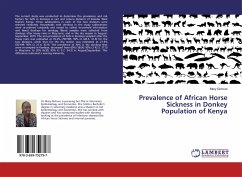There are about 500 million dogs in the world of which approximately 375 million are free roaming. Dogs living without human supervision may suffer from diseases, starvation, trauma and painful death. Dogs are also carriers and transmitters of several important zoonotic diseases, eg. rabies and echinococcosis. Control programmes for free roaming dogs as well as rabies vaccination programmes are running in many countries. Guidelines in dog population management, DPM, have also been published by both WHO, OIE and The ICAM Coalition, but still stray dogs are a problem of great concern. The question is why? In this book the problems associated with straying dogs are presented as well as the enunciation of major guidelines for DPM. Fieldstudies have been conducted in two different countries, Malawi and Peru, to see how published guidelines in DPM are implemented, what difficulties and challanges these two countries are facing and what could be done to better meet the problems.
Bitte wählen Sie Ihr Anliegen aus.
Rechnungen
Retourenschein anfordern
Bestellstatus
Storno








